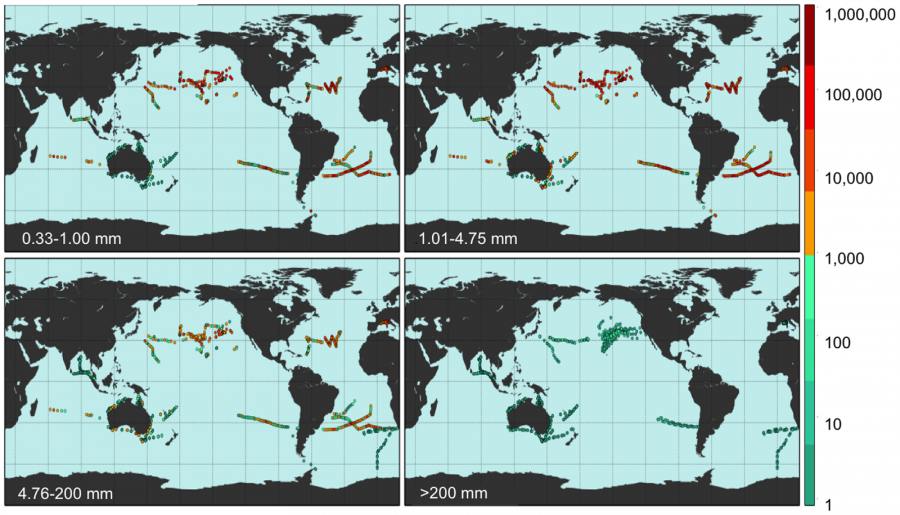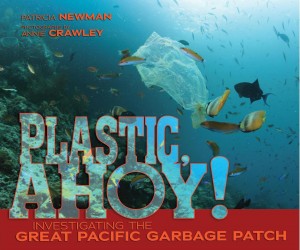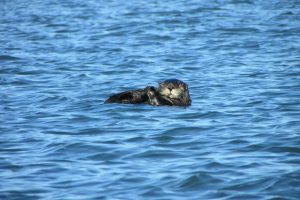In Plastic, Ahoy! Investigating the Great Pacific Garbage Patch I introduce readers to three pioneering female trash detectives who journeyed to the North Pacific Central Gyre to study plastic. Their 2009 Scripps Environmental Accumulation of Plastics Expedition (SEAPLEX) expedition was one of the first of many to set sail to study the plastic problem that poisons and entangles marine life.
In a recent study published December 10, 2014, scientists accumulated data from 24 such expeditions–a combination of 680 net tows and 891 visual survey transects. They estimate a startling total of 5.25 trillion pieces of plastic in our world ocean that swirl around with the help of prevailing winds and surface currents. The pieces measure from .33 mm to over 200 mm.
A few other facts from the study:
- Scientists expected to see higher plastic counts in the northern hemisphere because of years of shipping and the litter associated with people moving across the ocean. Surprisingly, the amounts are about the same for the southern and northern hemispheres. Perhaps plastics are moved from gyre to gyre more easily than previously thought. Or perhaps additional sources of plastic pollution exist in the southern hemisphere that have not been accounted for.
- The authors of the study say, “The ultimate fate of buoyant microplastics is not at the ocean surface.” A large proportion of plastic is lost from the surface as it becomes more and more fragmented. Plastic may wash up on beaches, sink because organisms attach themselves to the surface and make the fragments heavier, or organisms may eat it. See “Miriam’s Hitchhikers” and “Charting the Answers” in Plastic, Ahoy!
- The study focused on plastic on the surface of the ocean. Further research is necessary at a variety of depths to determine how smaller bits of plastic are moving deeper in the water column.
“Plastics are like a cocktail of contaminants floating around in the aquatic habitat,” said Chelsea Rochman, marine biologist at the University of California, Davis, and Plastic, Ahoy! trash detective. “These contaminants may be magnifying up the food chain.” [Source: NY Times]








Leave a Reply
Your email is safe with me.